I disagree with the statement made in the abstract. The mainline Pokémon games have become stale and uninteresting, so trying out different gameplay ideas is exactly what the franchise needs. There's a lot of potential in a Pokémon game with real-time combat, don't let a poorly designed cash-in game like this make you blind to it.
Pokemon Ranger: Guardian Signs Review
|
|
See PixlBit's Review Policies

On 10/17/2010 at 02:26 AM by Chessa DiMola Bland and repetitive gameplay prove that the Pokémon series should stick to being a turn-based RPG. |

For die hard Pokémon fans and young children.
As I played through my first Pokémon Ranger title, Pokémon Ranger: Guardian Signs, I tried to think of what childhood game it reminded me of. Then it hit me: Red Light/Green Light. Just as the game let me take the reins and venture out on my own for five minutes, it stopped me dead in my tracks with unbearable amounts of text and bland storyline. Despite a few charming aspects about this game, few will find any significant entertainment value, aside from very young children who won't notice the game's redundant nature.
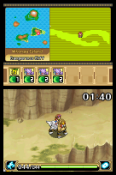
In this third edition of the Pokémon Ranger series, players explore a chain of islands known as the Oblivia region. Their goal is to stop an enemy group known as the Pokémon Pinchers that are attempting to capture the indigenous Pokémon. Fairly immediately players are introduced to a ukulele playing Pichu, fittingly known as Ukulele Pichu, who will aid them in their quest as their partner Pokémon. As players continue onward, the storyline slowly (very slowly) unravels to reveal the Pokémon Pinchers ulterior motives involving legendary Pokémon and Pokémon lore.
After assuming the role of either the male or female protagonist, players will be introduced to the general gameplay mechanics. The Rangers' most vital piece of equipment is known as the Styler, which allows them to convey their feelings of friendship to surrounding Pokémon. The Styler's charge points act as health and indicate how much damage players can take as they attempt to friend wild Pokémon.
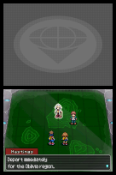
In order to befriend a Pokémon, players must continuously draw circles around the creature until a gauge is filled, at which time the Pokémon will then be added to player's party. As players continue to befriend Pokémon, they will earn experience points, allowing them to level up their Styler, which subsequently increases its stats, namely charge points and power.
Initially, the new method of "catching" Pokémon is a fun departure from the classic formula of trapping them in a Pokéball. However, the system never changes from the beginning of the game until the end. Developers have tried to add depth to the system by allowing party Pokémon to assist in filling the “friendship gauge”. Unfortunately, this system is useless for two reasons: the first being that Ukulele Pikachu is far better at filling the gauge than any other Pokémon, and the majority of Pokémon can be caught with enough persistence (I'm talking fifteen seconds of effort here). The only types that absolutely require the aid of party Pokémon are wild Pokémon in distress. In this state, the creatures aren’t able to feel friendship until they are calmed down. But as long as players make an effort to keep a variety of different Pokémon types in their arsenal, this task is incredibly simple.
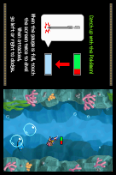
As previously stated, players will always want to keep a wide variety of Pokémon types on hand, as they will mainly be exploring the world. Up-to-eight can be held at a time, and the majority are equipped with a unique land attribute, such as Cut, Smash, Burn, etc, that will allow players to clear obstacles within their paths. Certain obstacles require a joint effort between multiple Pokémon, and an onscreen window will let the player know how many of a particular land skill are needed, and what level that skill has to be in order to clear it. Once a Pokémon's land skill has been used, they will leave the party. Thankfully, Pokémon are not in short supply in any of the various locations players will explore on the islands, including in the air and under the water. Thus if players need to find three Pokémon of a particular type to clear an obstacle, they do not usually have to go far out of their way to create their task force, an aspect I must say that is greatly appreciated.
The game’s exploration elements are also a bit dull, as players will generally repeat the same steps over and over. A denizen of the Oblivia area will describe some type of trouble, players will be able to play for about ten to fifteen minutes, and they will be stuck, once again, in a monotonous, unnecessary NPC conversation before being able to continue on the original mission. After doing this a few times, eventually players will get into a quarrel with the Pokémon Pinchers, enjoy a bit of uninterrupted gameplay, and then make their way to a new area only to encounter the same scenario over and over. Though the game seems to be clearly aimed at a younger crowd, even they may get tired of the constant interruptions and hand-holding gameplay.
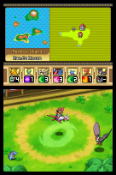
Guardian Signs, which are part of the game’s title, are criminally underused. Upon collection, players earn the ability to summon one of three legendary Pokémon: Raikou, Entei and Suicune. Each of the legendary Pokémon dons their own unique set of skills, which allow players to get past particular types of obstacles; for example, Raikou can jump over very large gaps. Considering the time and effort players will go through to acquire the emblems that will call the legendary Pokémon, it’s unfortunate and disappointing to see them get very limited and thoughtless use throughout the game.
Given the shallow gameplay, there’s almost no reason for any adult gamer to be interested in Pokémon Ranger: Guardian Signs... well, except for one. For die-hard fans of Pokémon Pearl/Diamond or Pokémon HeartGold/SoulSilver, there is a perk for sticking it out in Guardian Symbols, specifically the ability to encounter very rare Pokémon such as Deoxys and transfer them to your other Pokémon games. This is a great way to bolster your Pokédex in the deeper, mainline editions of the series.
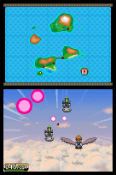
A game element that may appeal to the younger crowd is the up to four-person local multiplayer. Sharing a wireless connection will allow four players to take on multiple missions together, in which several different partner Pokémon can be obtained. I tend to assume that the multiplayer will only appeal to younger gamers as the missions are incredibly easy and will undoubtedly bore the more experienced gamer.
When it comes down to it, Pokémon Ranger: Guardian Signs is really just too shallow and slow paced for the average gamer. Even younger children of this generation have been exposed to games with more depth, which may even knock them out of the potential candidates who will enjoy this game. On the other hand, die hard Pokémon fans may find something to appreciate, as there is charm in watching a group of eight Pokémon follow your in-game character, and enjoyment in utilizing those Pokémon in unconventional ways.







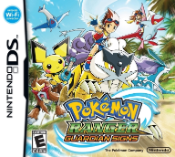

Comments